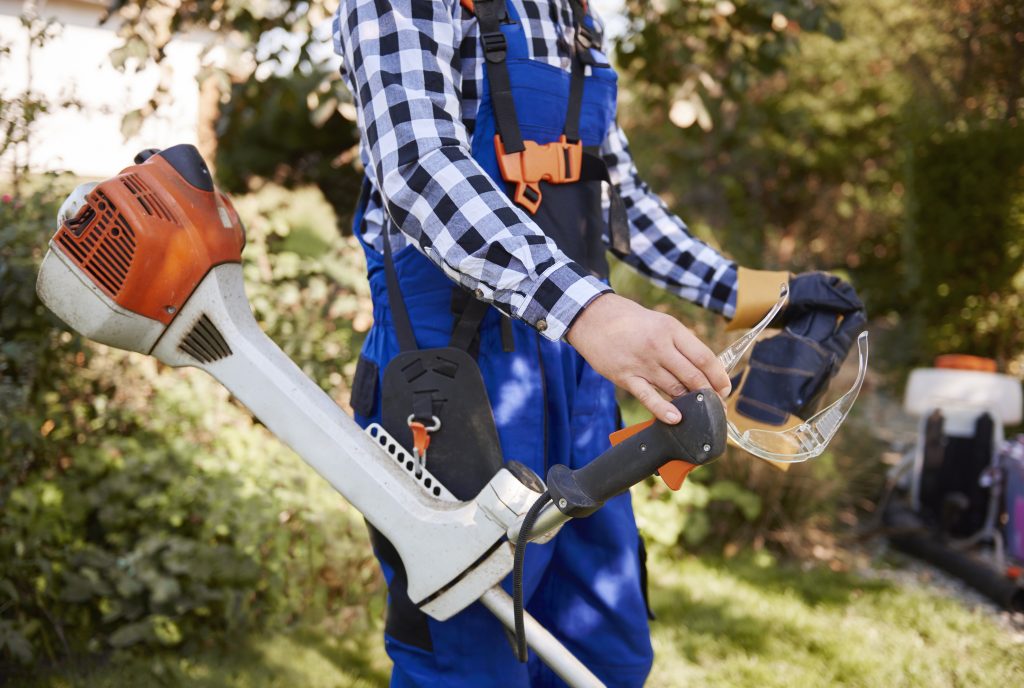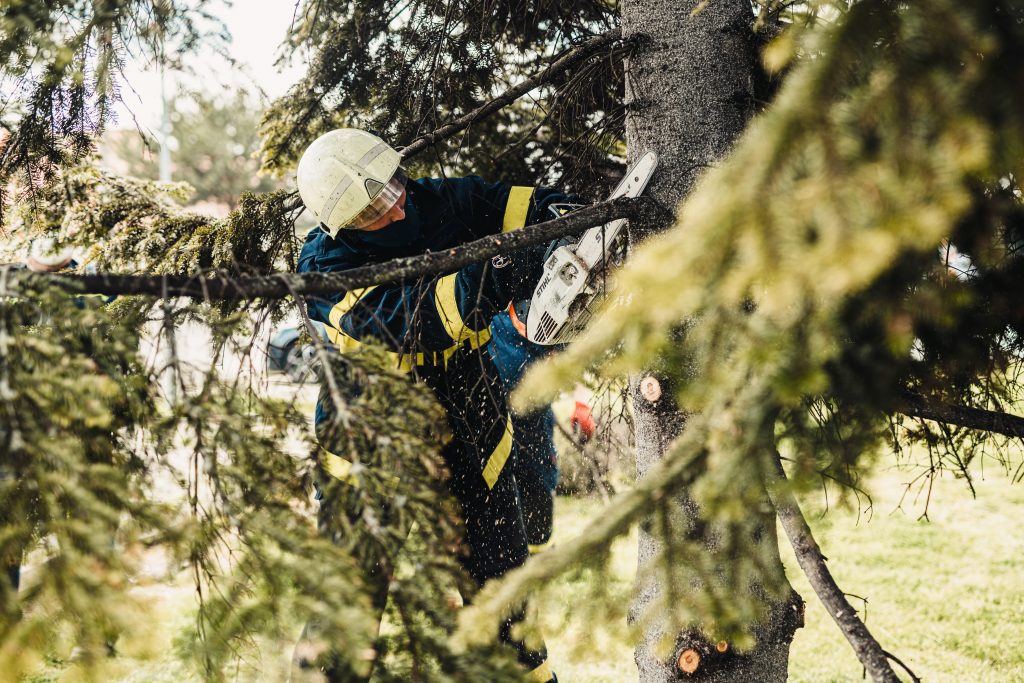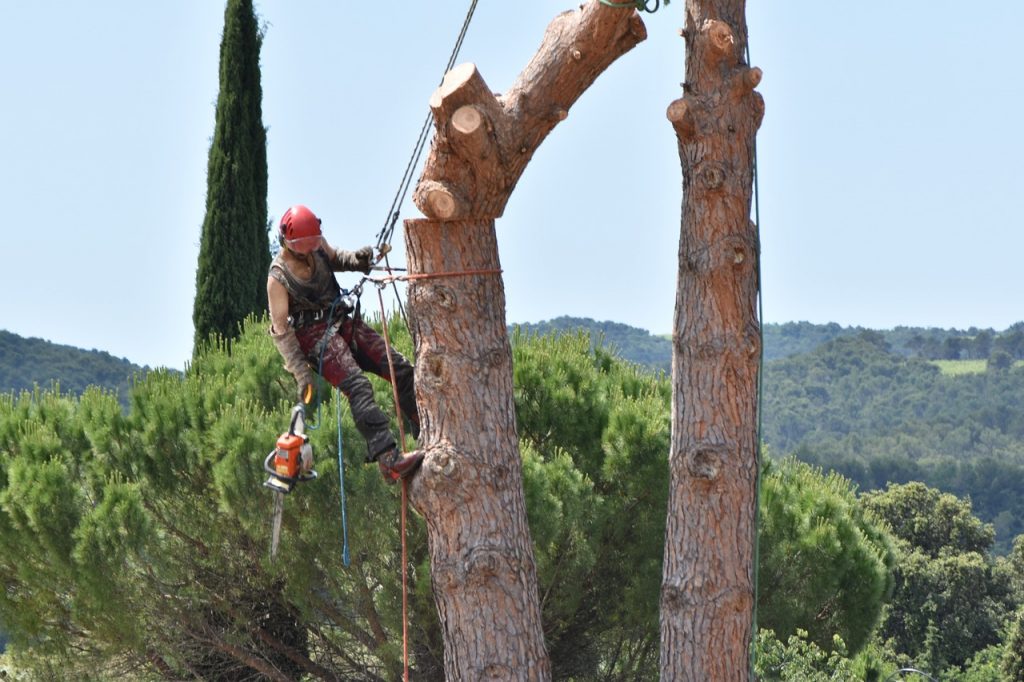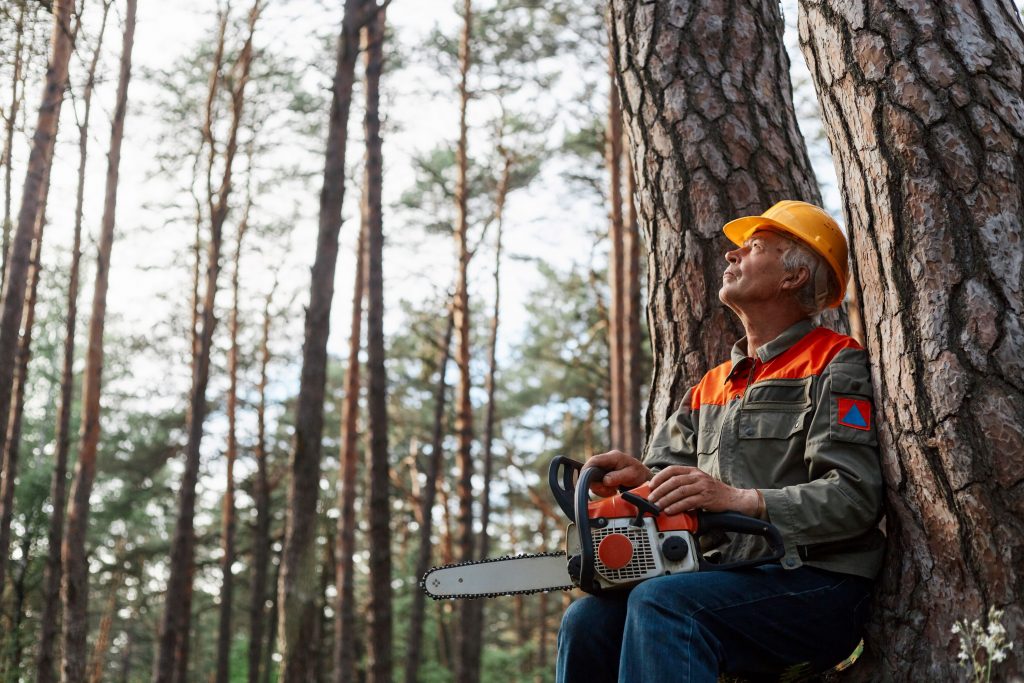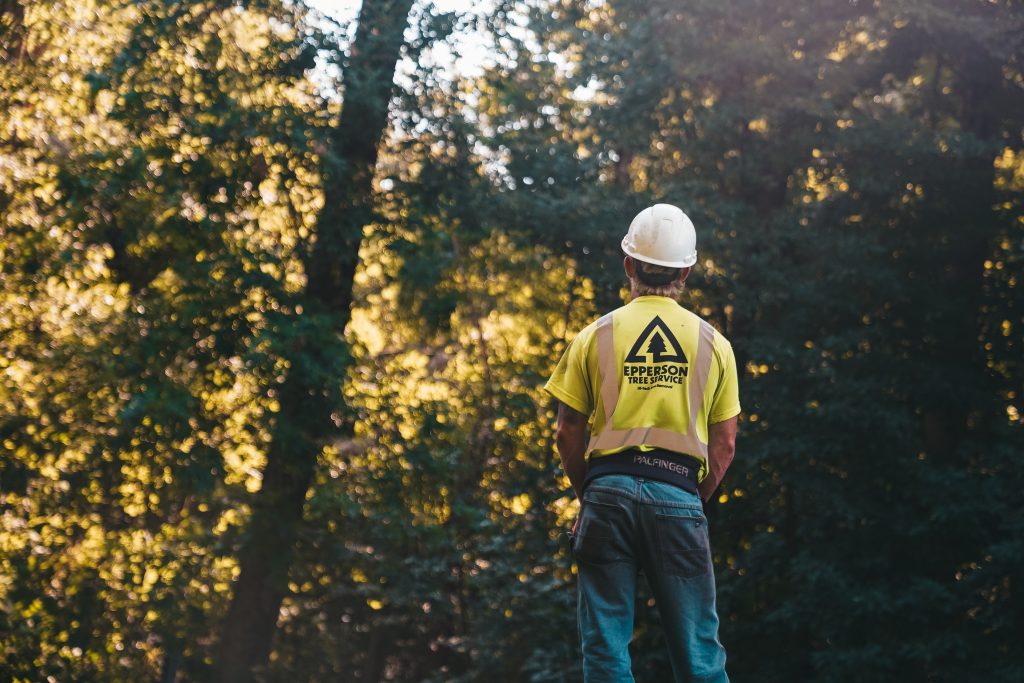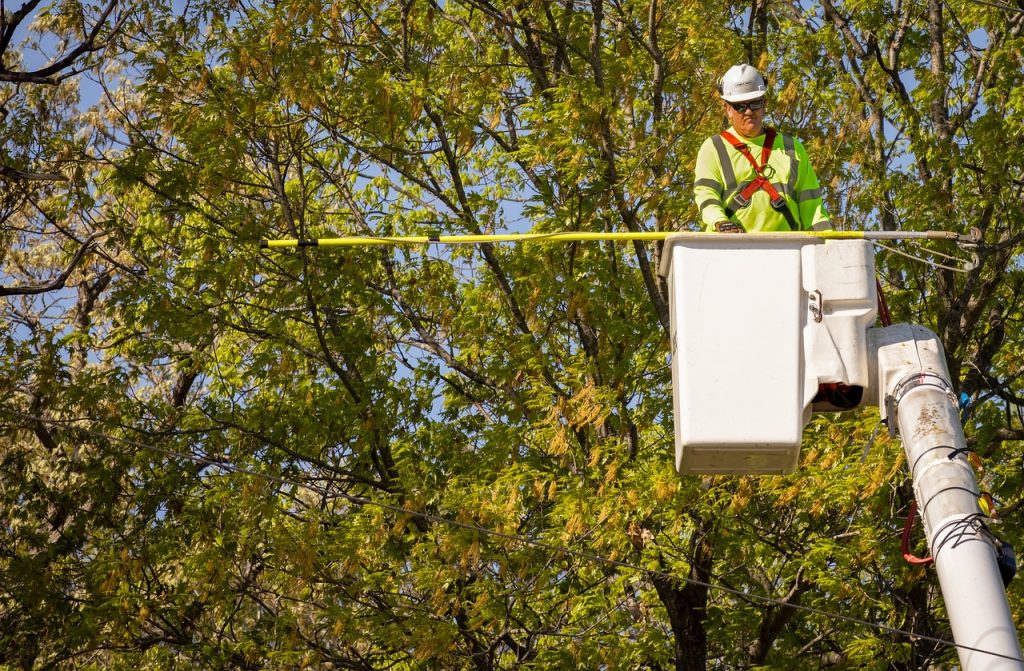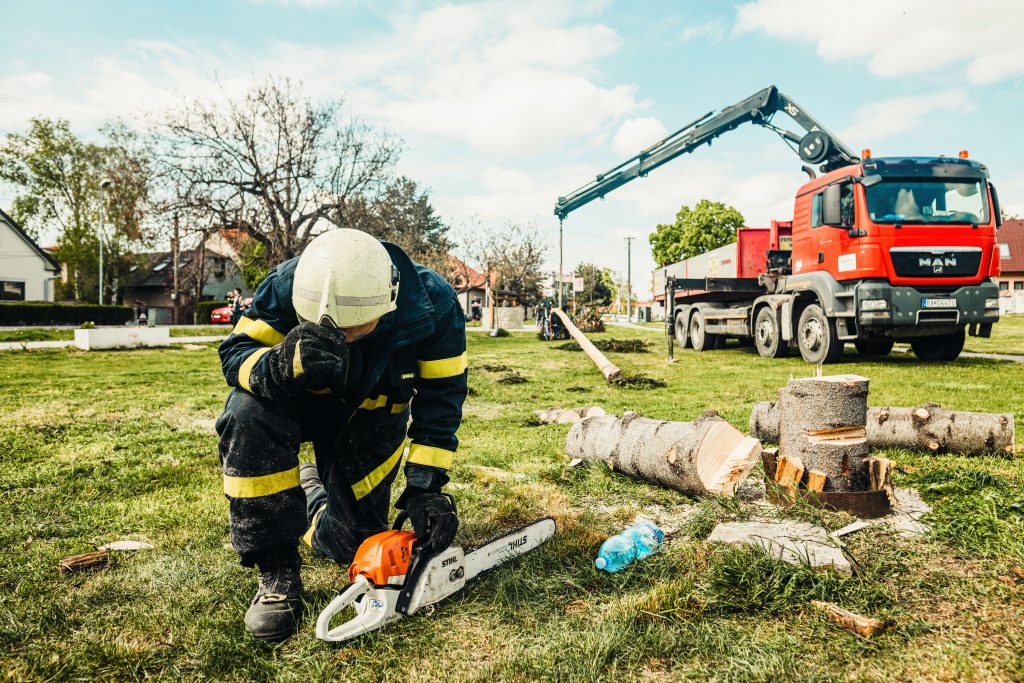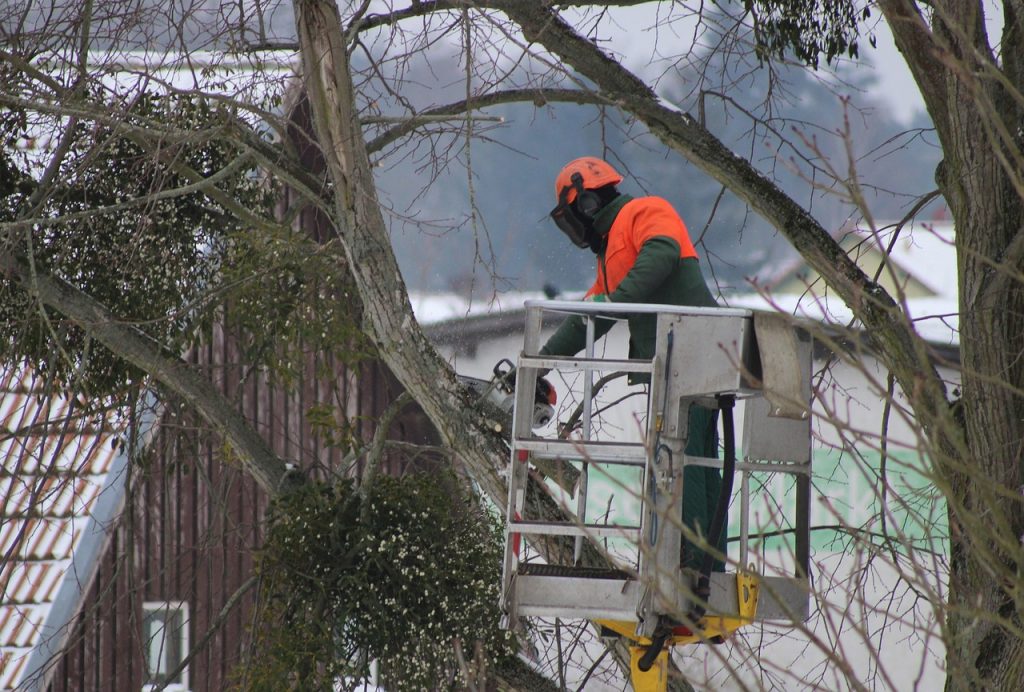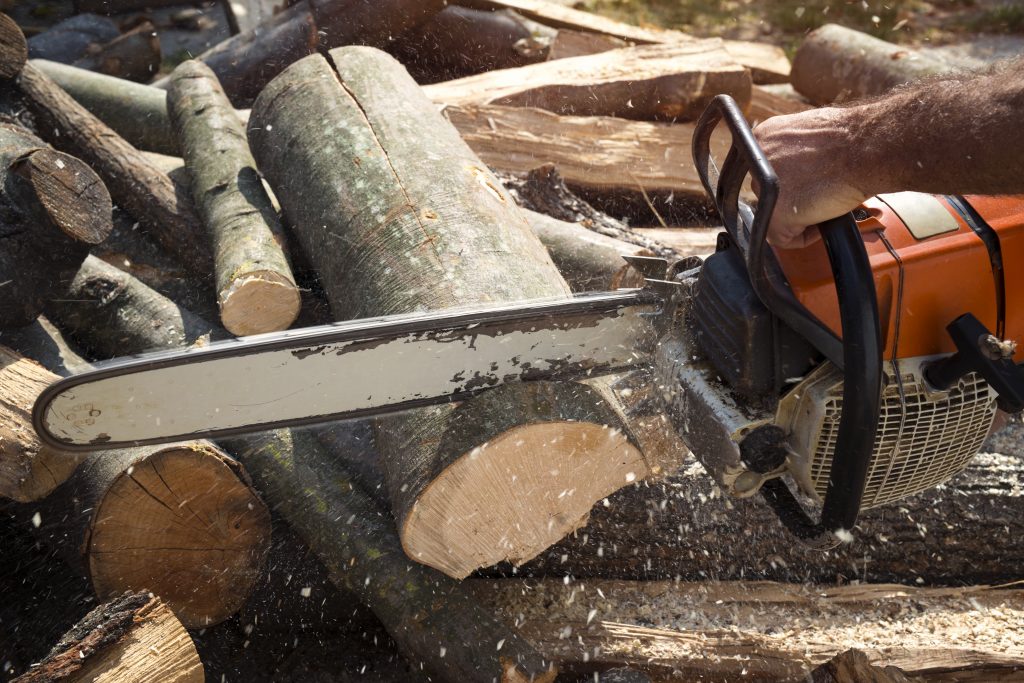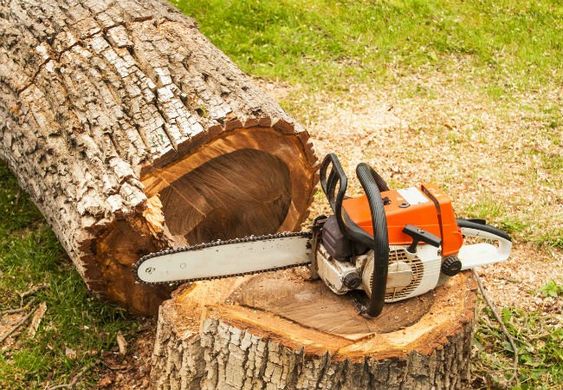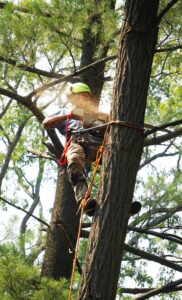How Much Does It Cost to Have a Tree Branch Removal?

Have you ever wondered how much it will cost to have a tree branch removal? Well, you’re in luck! In this article, we’ll break down the factors that influence the cost of this service. From the history of tree branch removal to helpful tips and considerations, we’ve got you covered. We’ll also provide you with step-by-step instructions for safe and efficient removal, along with dos and don’ts and common mistakes to avoid. So, let’s dive in and get your tree branch removal questions answered!
Key Takeaways
- The cost of tree branch removal is influenced by factors such as the size and height of the tree, accessibility of the branches, number of branches to be removed, and the condition of the branches.
- Tree branch removal has a long history and has evolved from using basic tools like axes and saws to utilizing specialized equipment such as bucket trucks and chippers.
- When considering tree branch removal, it is important to research and compare prices from different professionals, negotiate prices, and obtain multiple quotes to ensure the best value for money.
- The decision between DIY tree branch removal and hiring a professional depends on factors such as comfort level, budget, and the availability of proper equipment and knowledge. Hiring a professional guarantees expertise and eliminates risks.
Introduction: Factors
There are several factors that can affect the cost of tree branch removal. When considering tree branch removal costs, it’s important to take into account these factors:
- Size and height of the tree: The larger and taller the tree, the more difficult and time-consuming it will be to remove the branches. This can increase the cost as it requires specialized equipment and more labor.
- Accessibility: If the tree branches are located in a hard-to-reach area, such as close to a building or in a narrow space, it will require additional effort and skill to safely remove them. This can also impact the cost.
- Number of branches: The more branches that need to be removed, the longer the process will take. This can increase the cost as it requires more time and labor.
- Condition of the branches: If the branches are diseased, damaged, or tangled, it may require extra caution and care to remove them without causing further damage. This can affect the cost as it may require more specialized techniques.
- Location: The location of the tree can also impact the cost. If the tree is located in a remote or difficult-to-access area, it may require additional transportation costs for equipment and personnel.
Considering these factors when removing tree branches will help you get an accurate estimate of the cost. Now, let’s delve into the history of tree branch removal and how it has evolved over time.
Tree Branch Removal History
Looking back at the history, you might be surprised to know how common it is for people to get rid of unwanted tree branches. Tree branch removal has been practiced for centuries, and over time, various techniques and equipment have been developed to make the process more efficient and safe.
In the early days, people relied on simple tools like axes and saws to remove tree branches. These tools required a lot of physical strength and time. As technology advanced, more specialized equipment was introduced. Today, there are several techniques and equipment available for tree branch removal.
One popular technique is pruning, which involves selectively removing branches to improve the overall health and appearance of the tree. This technique requires the use of pruning shears, loppers, and pruning saws. Another technique is tree felling, which is used when a tree needs to be completely removed. Chainsaws are commonly used for this purpose.
In addition to these techniques, there are also advanced equipment options available. For example, bucket trucks and cranes are used to safely reach and remove branches from tall trees. Mulchers and chippers are used to dispose of the removed branches, turning them into mulch or wood chips.
Now that you understand the history and techniques of tree branch removal, let’s move on to some tips that can help you effectively remove unwanted branches from your trees.
Tips
When it comes to tree branch removal, there are several cost factors to consider. It’s important to weigh the cost of doing it yourself versus hiring a professional. If you decide to hire a professional, it’s also worth knowing some price negotiation tips to help you get the best deal.
Cost Factors
To estimate the cost factors for tree branch removal, you should consider the size and location of the tree. These two factors play a crucial role in determining the overall cost of the job. Firstly, the size of the tree determines the amount of work and resources required. Larger trees usually have more branches and may require specialized equipment, which can increase the cost. Secondly, the location of the tree also affects the cost estimation. If the tree is near power lines or buildings, extra precautions and expertise may be needed, leading to higher costs. Proper budget planning is essential when considering tree branch removal, as it allows you to allocate the necessary funds for the job. Now, let’s explore the options of DIY vs professional tree branch removal.
DIY Vs Professional
If you’re considering whether to do it yourself or hire a professional, it’s important to weigh the risks and benefits of each option. When it comes to tree branch removal, there are a few things to consider. DIY can be cost-effective, as you won’t have to pay for professional services. However, it requires proper equipment and knowledge to ensure safety. Hiring a professional, on the other hand, guarantees expertise and eliminates the risk of accidents. They have the necessary tools and experience to complete the job efficiently. While it may be more expensive, you’ll have peace of mind knowing that the task is being handled by professionals. Ultimately, the decision depends on your comfort level and budget. Transitioning into the next section on ‘price negotiation tips,’ it’s important to understand the cost factors involved in tree branch removal.
Price Negotiation Tips
Remember, researching and comparing prices from different professionals and services can help you find the best deal for your budget. When it comes to negotiating prices for tree branch removal, there are a few strategies you can use to find affordable options. First, be prepared to negotiate. Many professionals are willing to work with you on price, especially if they are competing with other companies for your business. Second, ask for discounts or promotions. Some companies may offer special rates for certain times of the year or if you bundle multiple services together. Third, consider getting multiple quotes and using them as leverage. If one company offers a lower price, you can use that information to negotiate with another company. By employing these price negotiation strategies, you can find the best deal for your tree branch removal needs. Now, let’s explore some important traits and considerations when it comes to tree branch removal.
Tree Branch Removal Traits and Considerations
You should consider the size and accessibility of the tree branch before scheduling its removal. Tree branch removal techniques vary depending on the branch’s characteristics and location. If the branch is small and easily reachable from the ground, you may be able to remove it yourself using basic tools like hand pruners or a small saw. However, if the branch is large or located high up in the tree, it is best to hire a professional tree service company. They have the necessary equipment, such as cranes and chainsaws, to safely remove the branch without causing damage to your property or the tree itself.
When it comes to the best time for tree branch removal, it is generally recommended to do it during the dormant season, which is typically during late fall or winter. During this time, the tree is less likely to experience stress or damage from the removal process. Additionally, the absence of leaves makes it easier to assess the branch’s structure and determine the best approach for removal.
Considering these factors, it is important to take the necessary steps for safe and efficient tree branch removal. By following proper techniques and precautions, you can ensure that the removal process is carried out smoothly and without any accidents.
Steps for Safe and Efficient Tree Branch Removal
To safely and efficiently remove a tree branch, it is important to assess its size and accessibility before taking any action. Here are the steps you should follow to ensure a successful branch removal:
- Evaluate the size of the branch: Determine if the branch is small enough for you to handle on your own or if professional help is needed. Larger branches may require special equipment and expertise.
- Consider accessibility: Take into account the location of the branch and any obstacles that may affect the removal process. If the branch is close to power lines or other structures, it’s crucial to contact professionals to avoid potential hazards.
- Choose the right technique: Depending on the size and condition of the branch, different techniques can be used for removal. These can include pruning, cutting, or even using a tree removal service if necessary.
- Cost considerations: When deciding on the best course of action, it’s essential to consider the cost implications. Hiring professionals for larger branches or complex removals may come with a higher price tag, but it ensures safety and efficiency.
Goals
The main aim is to safely and efficiently remove a tree branch while considering the goals of the removal process. When it comes to tree branch removal techniques, there are a variety of methods that can be employed. One cost saving strategy is to assess the branch and determine if it can be pruned instead of completely removed. Pruning involves cutting back the branch to a healthy lateral branch or bud, which can help maintain the overall health of the tree while still achieving the desired goal of branch removal.
Another cost saving strategy is to carefully plan the removal process to minimize the impact on surrounding structures and landscaping. This can involve using ropes and pulleys to lower the branch safely to the ground, rather than hiring expensive equipment like cranes or bucket trucks. Additionally, recycling or repurposing the removed branches can help save on disposal costs.
By incorporating these cost saving strategies and utilizing proper tree branch removal techniques, you can achieve your goals while minimizing expenses. Developing good habits for safe tree branch removal is essential to ensure the process is executed smoothly.
[Table]
| Tree Branch Removal Techniques | Cost Saving Strategies |
|---|---|
| Pruning | Assess branch for pruning potential |
| Lowering branch with ropes and pulleys | Careful planning to minimize equipment costs |
| Recycling or repurposing removed branches | Proper disposal to save on disposal costs |
[/Table]
In the next section, we will discuss habits for safe tree branch removal without compromising the goals of the removal process.
Habits for Safe Tree Branch Removal
When safely removing a tree branch, it’s important to develop good habits for ensuring the process is executed smoothly and without compromising the goals of the removal process. By following proper tree branch trimming techniques, you can prevent potential hazards and maintain the health of the tree. One common mistake is not assessing the branch properly before removal. Take the time to inspect the branch for any signs of disease or decay, as these branches may require special care or removal techniques. Another mistake is not using the right tools for the job. Make sure you have the appropriate pruning shears or saw to safely remove the branch without causing damage to the tree or yourself. Additionally, failing to make proper cuts can lead to improper healing and potential infection for the tree. Always make clean cuts just outside the branch collar, as this will promote faster healing and reduce the risk of disease. By developing these good habits, you can ensure a successful and safe tree branch removal process.
Now, let’s dive into a real-life story that highlights the importance of these habits in tree branch removal.
A Real-Life Story
After assessing the branch for signs of disease or decay, it’s crucial to use the proper tools for a safe and successful removal process. Let me share with you a real-life experience of mine that will give you some insights into the cost comparison of tree branch removal.
Last summer, I had a large tree branch hanging dangerously close to my house. Worried about the potential damage it could cause, I decided to have it removed. I reached out to several professional tree service companies to get quotes for the job. Each company sent a representative to assess the branch and provide an estimate.
What I found during this process was that the cost of tree branch removal varied significantly from one company to another. Some companies charged a flat rate based on the size of the branch, while others charged an hourly rate. There were even a few companies that offered a package deal for multiple branches. It was clear that doing a cost comparison was essential to ensure I was getting a fair price for the work.
With this real-life experience in mind, let’s now explore the next section, where we will discuss the importance of getting quotes from multiple tree service companies.
Quotes
During the process of getting quotes from multiple tree service companies, it’s important to compare not only the cost but also the services included in each estimate. When it comes to tree branch removal, the average cost can vary depending on several factors, such as the size and location of the tree, the complexity of the job, and the specific services offered by the company. On average, tree branch removal companies charge around $300 to $700 for a single tree branch removal. However, this cost can increase if there are multiple branches or if the tree is in a difficult-to-reach area. Additionally, some companies may include additional services in their estimates, such as debris removal, stump grinding, or tree trimming. It’s crucial to carefully review each quote to ensure you understand exactly what services are included and if there are any additional costs. By comparing both the cost and services offered by different tree service companies, you can make an informed decision and choose the best option for your needs.
Now, let’s dive into some secrets that can help you save money and ensure a smooth tree branch removal process.
Secrets
One of the secrets to saving money and ensuring a smooth process for removing tree branches is to carefully review the services included in each quote from different companies. When it comes to tree branch removal, there are several cost factors to consider that can affect the overall price. These secrets can help you make an informed decision and get the best value for your money.
Firstly, the size and accessibility of the tree branches play a significant role in determining the cost. Larger branches or those located in hard-to-reach areas may require more time, equipment, and manpower, which can increase the price. Additionally, the number of branches that need to be removed will also impact the cost.
Another secret is to consider whether the company includes debris removal in their services or if it comes at an additional cost. Some companies may offer to remove and dispose of the branches, while others may leave it up to you to handle the cleanup. It’s important to clarify this upfront to avoid any surprises.
Insights and Cost
Now that you know some of the secrets to tree branch removal, let’s delve into some insights and cost-saving strategies. When it comes to tree branch removal techniques, there are a few options to consider. One common method is pruning, where specific branches are selectively removed to improve the overall health and appearance of the tree. Another technique is called crown reduction, which involves removing larger branches to reduce the size and weight of the tree’s canopy. Both techniques require specialized tools and skills to ensure the job is done safely and effectively.
As for the cost, it can vary depending on several factors. The size and height of the tree, the number of branches to be removed, and the complexity of the job all play a role in determining the final price. Additionally, the location of the tree and accessibility for equipment can also impact the cost.
To save on tree branch removal, it’s important to consider a few strategies. First, get multiple quotes from different tree service companies to compare prices. This will give you a better idea of the average cost in your area. Second, consider bundling multiple tree services together, such as tree trimming and branch removal, as some companies offer discounts for combined services. Lastly, schedule the work during the off-season when tree service companies are less busy, as they may offer lower rates during slower times.
Benefits of Tree Branch Removal
Removing tree branches can greatly improve the health and appearance of your trees, as well as increase the safety of your property. There are several benefits to removing tree branches that you should consider. First and foremost, removing dead or diseased branches can prevent the spread of diseases and pests to the rest of the tree. This helps to maintain the overall health and vitality of the tree, ensuring its longevity. Additionally, removing branches that are rubbing or crossing each other can help prevent damage to the tree’s bark and promote better growth. By allowing more sunlight and airflow to reach the tree’s canopy, branch removal can also improve its overall appearance and aesthetic appeal.
When it comes to the cost factors of tree branch removal, several things need to be taken into consideration. The size and number of branches to be removed, as well as the height and accessibility of the tree, can all impact the cost. Additionally, factors such as the location of the tree, the presence of utility lines, and any additional services required, such as stump removal, can also influence the overall cost. It is important to consult with a professional arborist to assess your specific needs and provide an accurate quote.
Lessons
When it comes to tree branch removal, there are several cost factors that you need to understand. In this discussion, we will explain these factors in detail, including the size of the branch, the location of the tree, and any additional services required. Additionally, we will explore the pros and cons of DIY tree branch removal versus hiring a professional, as well as hidden fees that you should consider before making a decision.
Cost Factors Explained
The cost of tree branch removal can vary depending on several factors. To understand the breakdown of tree branch removal cost, it is important to consider the factors that influence the final price. First, the size and number of branches play a significant role. Larger branches require more effort and equipment, thus increasing the cost. Additionally, the location and accessibility of the tree affect the overall price. If the tree is in a hard-to-reach area or obstructed by structures, it may require specialized equipment which can add to the cost. Lastly, the complexity of the job, such as the presence of power lines or nearby buildings, can also impact the price. With these factors in mind, it is important to weigh the cost against the potential risks and consider whether a professional removal service is necessary or if a DIY approach could suffice.
DIY Vs Professional
If you’re considering handling the job yourself, it’s important to weigh the potential risks against the cost of hiring a professional. When it comes to tree branch removal, the decision between DIY and hiring a professional can be a tough one. While DIY may seem cost-effective at first, there are several factors to consider. Firstly, you’ll need to invest in the necessary tools and equipment, which can be quite expensive. Additionally, without proper knowledge and experience, you could potentially cause damage to your property or even injure yourself. On the other hand, hiring a professional ensures that the job is done safely and efficiently. They have the expertise, training, and specialized equipment to handle the task. While it may seem like an added expense upfront, it can save you from potential risks and costly mistakes in the long run. Now, let’s delve into the hidden fees to consider when hiring a professional tree branch removal service.
Hidden Fees to Consider
One important factor to consider is whether or not the professional includes cleanup services in their fee. When hiring a tree branch removal professional, it’s essential to inquire about equipment options and any potential hidden costs. Some professionals may charge extra for the use of specialized equipment, such as cranes or chippers, which can significantly impact the overall cost. Additionally, you should be aware of any hidden fees that may arise during the process. These hidden costs could include disposal fees for the branches or debris, transportation fees if the professional needs to travel a long distance, or even fees for additional labor if the job turns out to be more complex than initially anticipated. It’s crucial to have a clear understanding of all the costs involved before proceeding with the tree branch removal. Understanding these hidden fees will help you make an informed decision and avoid any surprises later on. Now, let’s delve into the routines {yt} for effective tree branch removal.
Routines
Having a regular maintenance routine can save you money on tree branch removal costs. Tree branch maintenance is an essential aspect of keeping your trees healthy and your property safe. Regular tree branch trimming not only enhances the aesthetic appeal of your landscape, but it also helps prevent potential hazards caused by overgrown or damaged branches.
To maintain your trees’ health and prevent the need for costly branch removal, it is recommended to have a routine tree branch trimming schedule. A professional arborist can assess the condition of your trees and provide guidance on the frequency and extent of trimming required. Generally, it is advisable to trim tree branches every 3-5 years, depending on the tree species and its growth rate.
During tree branch maintenance, arborists carefully remove dead, diseased, or damaged branches. They also prune branches that are crossing or rubbing against each other, as this can lead to further damage or disease. Proper pruning techniques are employed to ensure the tree’s structural integrity is maintained while promoting healthy growth.
Pros and Cons
When considering tree branch maintenance, you should weigh the advantages and disadvantages to make an informed decision. There are several pros and cons to keep in mind before proceeding with tree branch removal. On the positive side, removing dead or diseased branches can improve the overall health and appearance of the tree. It can also prevent potential hazards, such as falling branches during storms. Additionally, pruning can stimulate new growth and improve the tree’s structural integrity. However, there are also some drawbacks to consider. Pruning large branches can be labor-intensive and may require professional assistance, which can be costly. Moreover, excessive pruning can weaken the tree and make it more susceptible to disease and pests. Before hiring a tree service, it’s essential to do your research and consider price negotiation tips. Get quotes from multiple companies and compare their prices and services. Don’t automatically choose the cheapest option, as quality workmanship is crucial for the health of your tree. With these considerations in mind, you can make an informed decision about tree branch removal. In the next section, we will discuss the dos and don’ts of tree branch maintenance to ensure you take the appropriate steps for your tree’s well-being.
Dos and Dont’s
When it comes to tree branch removal, safety should always be the top priority. It’s important to follow proper techniques to ensure the process is done safely and efficiently. Here are some dos and don’ts to keep in mind:
Dos and Dont’s for Tree Branch Removal
| Dos | Dont’s |
|---|---|
| Wear protective gear such as gloves, goggles, and a hard hat | Attempt to remove large branches on your own without professional help |
| Assess the branch for any signs of decay or damage before removal | Cut branches from a ladder or unstable surface |
| Use proper cutting tools, such as pruning shears or a pruning saw | Remove branches during windy or stormy conditions |
| Make a clean cut just outside the branch collar to promote healing and prevent disease | Stand directly under the branch being removed |
| Dispose of branches properly, either by chipping or recycling | Neglect to inform neighbors or passersby of tree branch removal activities |
Mistakes to Avoid
One common mistake to avoid during the process of removing tree branches is not properly assessing the branch for signs of decay or damage before removal. This is crucial for tree branch removal safety. Before you start cutting, take a close look at the branch and check for any visible signs of decay, such as discoloration, softness, or fungus growth. Additionally, inspect the branch for any cracks, splits, or other structural damage that could make it unstable. Failure to assess the branch for these issues can result in unexpected breakage or collapse during the removal process, posing a serious safety risk.
Another common mistake in tree branch removal is not using the right tools for the job. Using a dull or inappropriate tool can make the process more difficult and dangerous. Ensure that you have a sharp, properly sized pruning saw or loppers, depending on the branch’s thickness. Using a chainsaw without proper training and experience is also a mistake that can lead to accidents. It is always advisable to hire a professional tree service for larger branches or difficult removals.
Key Takeaways
Now that you have learned about the mistakes to avoid when it comes to tree branch removal, it’s time to discuss some key takeaways. When it comes to removing tree branches, there are a few options you can consider. One option is to do it yourself if you have the necessary tools and knowledge. However, it is important to prioritize safety and ensure that you are capable of handling the task safely. Another option is to hire a professional tree service company. They have the expertise and equipment to safely and efficiently remove tree branches. Plus, they can also provide guidance on proper tree maintenance to prevent future branch issues.
Understanding the importance of tree maintenance is crucial. Regularly inspecting and maintaining your trees can help identify potential hazards and prevent accidents. It also promotes the health and longevity of your trees, enhancing the overall appearance and value of your property.
Now, let’s move on to the next section where we will discuss specific action steps for tree branch removal. This will provide you with a clear roadmap on how to safely and effectively remove tree branches without causing any harm to yourself or the tree.
Specific Action Steps for Tree Branch Removal
When it comes to tree branch removal, there are a few key points to keep in mind. First and foremost, having the right equipment is crucial to ensure a safe and efficient process. From sturdy ladders to pruning shears and chainsaws, having the proper tools on hand will make the job much easier. Additionally, it’s important to take necessary safety precautions, such as wearing protective gear like gloves and goggles, and ensuring that the area is clear of any people or obstacles. Lastly, proper disposal methods should be followed to ensure environmental responsibility, such as recycling or composting the branches whenever possible.
Equipment Needed for Removal
To remove a tree branch, you’ll need a chainsaw, safety goggles, and work gloves. Before starting any work, it’s important to ensure that your equipment is properly maintained. This includes checking the chainsaw for any damage or dullness in the blade, and ensuring that it is properly lubricated. Safety goggles are essential to protect your eyes from flying debris, while work gloves provide a good grip and protect your hands from cuts and blisters. When using the chainsaw, make sure to wear long sleeves and pants to protect your skin. Additionally, it’s important to have a sturdy ladder or harness to safely access the branch. By following these equipment maintenance and safety gear requirements, you’ll be well-prepared to safely remove a tree branch.
Now let’s discuss the safety precautions to take while removing a tree branch.
Safety Precautions to Take
It’s essential to take safety precautions when removing a tree branch. Before you begin, make sure you have the proper safety gear, including a hard hat, safety glasses, gloves, and sturdy boots. These items will protect you from any falling debris and potential injuries. When it comes to tree branch cutting techniques, it’s important to start by assessing the branch and identifying any potential hazards, such as power lines or unstable ground. Use a pruning saw or loppers to make clean cuts, starting from the bottom and working your way up. Always be mindful of your surroundings and have a clear escape path in case the branch falls unexpectedly. Remember, safety should be your top priority when removing tree branches. Now let’s move on to the next section about proper disposal methods.
Proper Disposal Methods
Make sure you dispose of the tree branches properly by checking with your local waste management facility for guidelines on how to properly dispose of yard waste. Proper disposal methods are essential to ensure environmental sustainability and prevent any potential hazards. When it comes to tree branch removal, there are a few options available. One common method is through curbside pickup, where you bundle the branches according to the guidelines provided by your waste management facility. Another option is to drop off the branches at a designated facility or composting site. Some areas may also offer tree limb chipping services, where the branches are turned into wood chips for various purposes. It is important to consider the cost implications of each method, including any fees associated with curbside pickup or drop-off locations. By following proper disposal methods, you can contribute to the well-being of your community and minimize any negative impact on the environment.
Frequently Asked Questions
How Long Does It Typically Take to Remove a Tree Branch?
Removing a tree branch typically takes a few hours, depending on the size and complexity. The process involves using specialized equipment like chainsaws and ropes to safely cut and lower the branch.
Is Tree Branch Removal Covered by Homeowner’s Insurance?
If you’re wondering about insurance coverage for tree branch removal, it’s important to consider cost factors. While homeowner’s insurance typically covers damage caused by fallen branches, removal expenses may vary depending on size, location, and complexity.
What Are the Potential Risks or Dangers Associated With Tree Branch Removal?
When removing tree branches, there are potential risks involved. It’s important to take safety precautions to avoid injury or property damage. Wear protective gear, use proper tools, and consider hiring professionals for larger branches.
Are There Any Legal Restrictions or Permits Required for Tree Branch Removal?
You might think removing a tree branch is a simple task, but there are legal requirements you must meet. Necessary permits are often required, so be sure to check with your local authorities before starting the job.
Can Tree Branch Removal Be Done Year-Round, or Are There Specific Seasons or Times That Are Best?
The best time for tree branch removal depends on the specific tree and its health. Equipment like pruning shears or a chainsaw may be needed. It’s important to consult a professional.
If you need a tree service in Utah, you can call:
Truco Services, Inc.
4640 Commerce Drive
Murray, Utah 84107
(801) 466-8044
https://truetreeservices.com/

